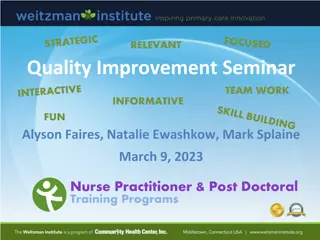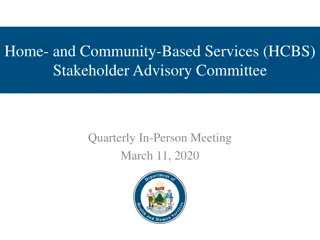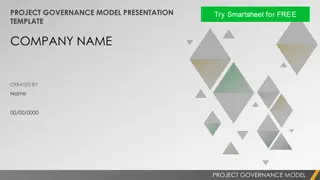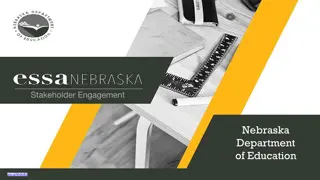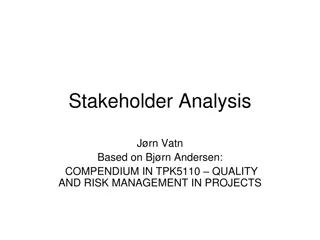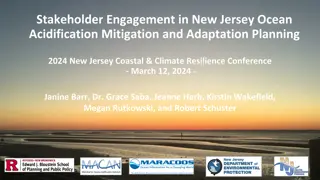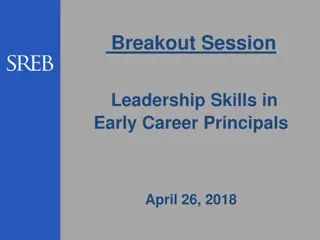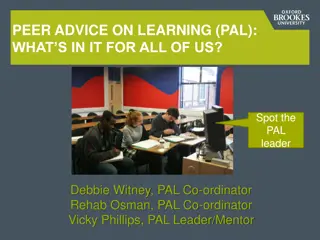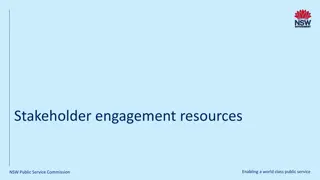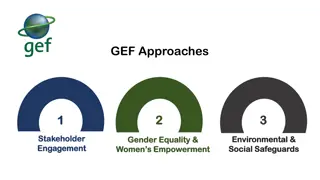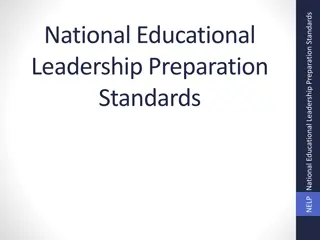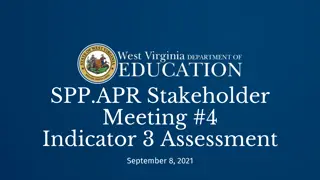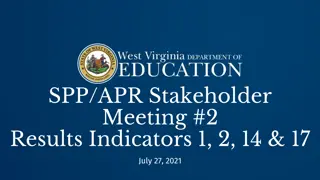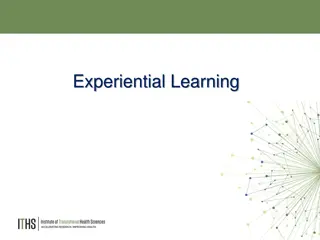Effective Stakeholder Engagement for School Leaders
A guide by Katie Rouse for school leaders on engaging with stakeholders effectively. The document emphasizes the importance of involving parents, teachers, community members, and students in decision-making processes to ensure sustained success. It outlines steps to identify, map, and plan engagement with various stakeholder groups to manage organizational change successfully.
Download Presentation

Please find below an Image/Link to download the presentation.
The content on the website is provided AS IS for your information and personal use only. It may not be sold, licensed, or shared on other websites without obtaining consent from the author.If you encounter any issues during the download, it is possible that the publisher has removed the file from their server.
You are allowed to download the files provided on this website for personal or commercial use, subject to the condition that they are used lawfully. All files are the property of their respective owners.
The content on the website is provided AS IS for your information and personal use only. It may not be sold, licensed, or shared on other websites without obtaining consent from the author.
E N D
Presentation Transcript
A School Leaders Guide to Effective Stakeholder Engagement By Katie Rouse Summer 2020
Orientation to this document Schools can be remarkably vibrant communities, especially when they are grounded in the input and perspective from parents, teachers, community members, and students. Ongoing and proactive engagement with school stakeholders is also critical to sustaining success over time. School leaders often wrestle with decisions that will affect their community, such as whether to open another school, change the school calendar, or begin a leadership transition. Sometimes, as has been the case in responding to the coronavirus pandemic, school leaders must confront changes and uncertainties that are beyond their control. In all of these instances, effective stakeholder engagement is essential. This deck offers some simple tools for school leaders to use as they steer their organizations through change. 2
Who are my stakeholders, and what is stakeholder engagement? Stakeholder engagement is the process of identifying the needs and expectations of the communities that support or benefit from your organization. Stakeholders may include: Effective stakeholder engagement: Students enrolled in the school and their families Builds relationships or trust Tailors communication to the needs and interests of individuals/groups Community groups that partner with the school and/or have helped the school build relationships in the community Uses a variety of methods to reach audiences Teachers and others who work at the school Surfaces and directly addresses incoming hopes, concerns, and commitments Board members who govern the school and represent the school to local influencers Enables successful implementation of an organizational change or strategic plan Funders who have invested (or could invest) in the school s success 3
Thoughtful and effective stakeholder engagement follows three simple steps 2) Map the gap between current and desired stakeholder support 3) Plan for stakeholder engagement 1) Identify your stakeholders 4
A simple and thoughtful engagement process helps support effective change Step 2 Step 3 Step 1 Map the gap between current and desired stakeholder support Plan for stakeholder engagement Identify stakeholders List critical stakeholders and what is fueling their enthusiasm for and/or resistance to the changes planned Map where stakeholders are, where you hope they might be, and the gap that must be bridged to earn their support Define how and when to engage each key stakeholder group Key Activities Identifies the right activities to reach each stakeholder group, tailored to unique needs, hopes, and goals Defines and provides context around priority stakeholders Clarifies how challenging it will be for each group to align Rationale Linked HERE is an Excel tool that you can use to map and plan for your community 5
First, identify your stakeholder groups Step 1 Identify your stakeholders Community Partners Students Families Staff Board Other groups (e.g., sponsor or authorizer, philanthropy, local political leadership)? Are these the right groups? Who else would you add? How would you break groups down into subgroups (e.g., tenured/new staff; families of younger/older students)? 6
Next, consider stakeholders perspectives Define the vision for the change and potential barriers to success Step 2 For each stakeholder group, consider: How will they perceive your potential changes in the school community? How might they strengthen and improve the plan for change? What perspectives, hopes, fears, or past experiences could fuel support or resistance? 7
Finally, plan for engagement Step 3 Plan for engagement For each stakeholder group, consider: What existing dynamics should inform your approach? History of outreach and relationship-building with this group? Power dynamics to navigate or be mindful of? What is the purpose of engaging this group? To seek input to strengthen and refine the emerging plan? To inform or provide updates on process? Something else? How frequently will you engage this group? Regularly (e.g., weekly, daily)? At the Beginning, Middle, and End of the planning process? At the end only? How will you engage them? (e.g., weekly in-person updates, quarterly email updates) 8
As you plan for engagement, consider how critical stakeholder investment is to success Level of existing support for change High support or commitment to change and not critical to successful implementation: High support or commitment to change and critical to success: Inform at beginning and end Engage throughout Low support for change and not deeply critical to successful implementation: Low support for change and critical importance to success: Engage early, often, and deeply Inform early, at middle, and at end of plan Importance to success of change or plan 9
Consider constraints on time and resources when tailoring your approach Tips for successful engagement from school leaders Tailor the approach based on level of engagement needed: If you don t need significant buy-in from a person/group, consider including them only in broad communications If a group is highly resistant, consider using more tailored, 1-on-1 time with individuals/small groups as needed For groups with enthusiasm for your plans, find opportunities for them to interact with others to share this Be strategic about investments of limited time and resources (more stakeholder engagement is usually good, but it must also be feasible for you/your team) Don t underestimate the importance of stakeholder engagement or the time required to do it well 10
Author and Acknowledgments Katie Rouse is a senior associate partner on the Strategic Advising team at Bellwether Education Partners. She can be reached at katie.rouse@bellwethereducation.org Bellwether thanks the Walton Family Foundation for their financial support of this deck. Any errors in fact or analysis are the responsibility of the author alone. 11


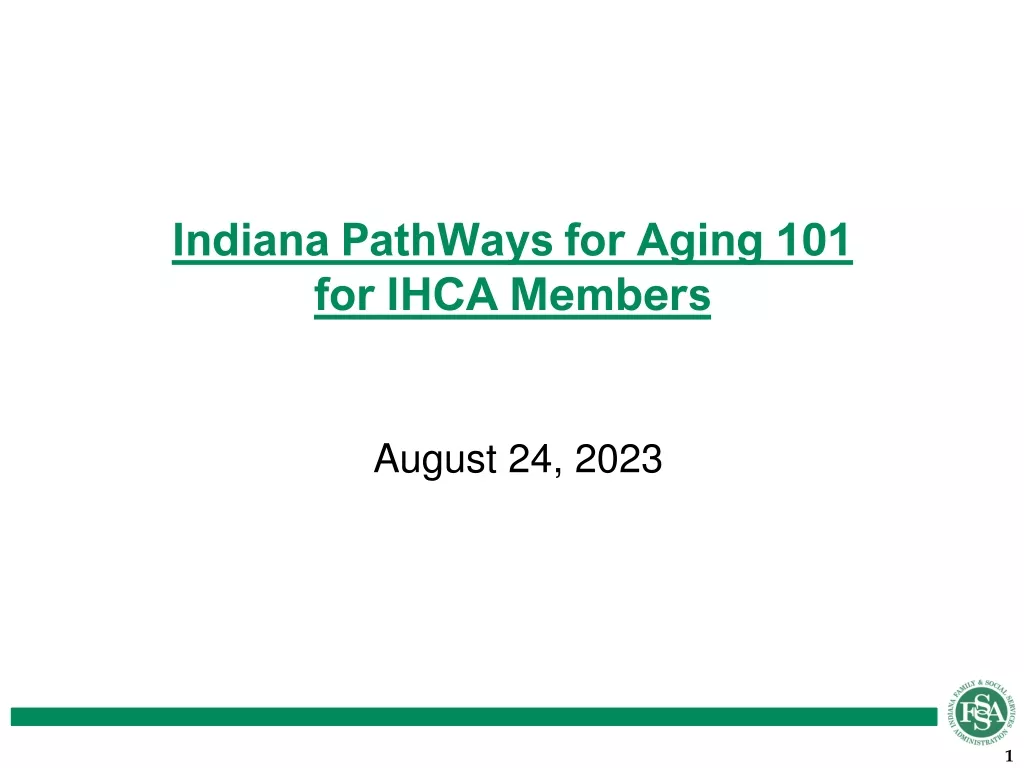
![Key Stakeholder Issues on PDAL Bill [B8 2021] 24 October 2023](/thumb/88726/key-stakeholder-issues-on-pdal-bill-b8-2021-24-october-2023.jpg)
